Flags of Countries in Central America
Antigua and Barbuda
Noticeable in the flag of Antigua and Barbuda is the rising sun in the middle. It represents the dawn of a new era that began with independence. The colors have this meaning: red stands for strength, black for the African heritage of the inhabitants and blue for hope, but also the water that surrounds the islands. White represents the beaches.
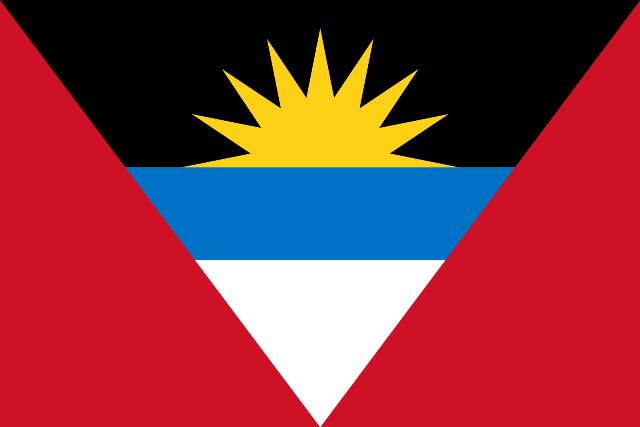
Bahamas
The yellow stripe in the middle of the flag stands for the beaches of the islands, they are surrounded by the sea – like the two light blue stripes. The black triangle stands for the unity and strength of the residents.
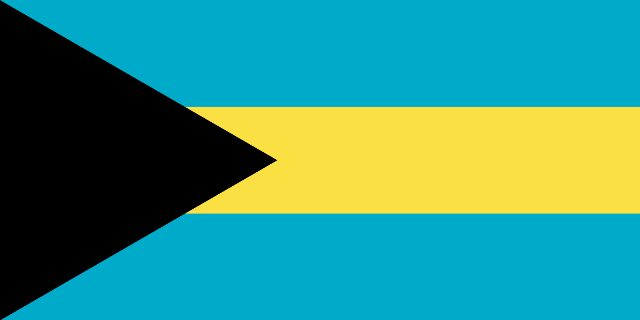
Barbados
The flag of Barbados is made up of three vertical stripes in dark blue, golden yellow and again dark blue. They stand for the sky, the sand and the sea. In the middle you can see a trident like the one carried by the sea god Neptune. It is a symbol of independence, but also of Barbados’ closeness to the sea.
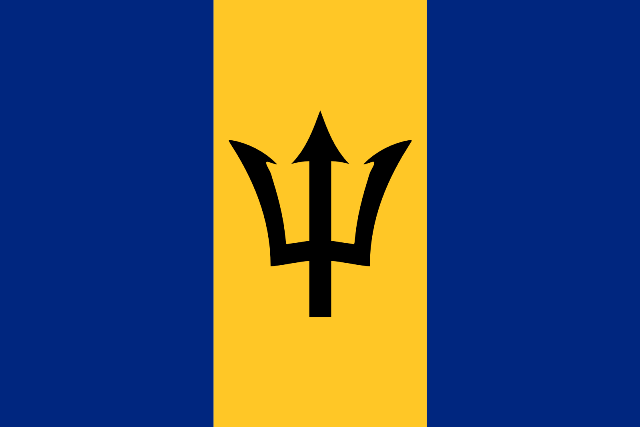
Belize
Belize’s flag is blue with two red stripes on the top and bottom. In the middle is the state coat of arms. The topic is the country’s wealth of precious woods. It shows a sign with tools for cutting down. The shield is held by a black man with a paddle and a creole with an ax. A mahogany tree grows behind the shield. The motto is: Sub Umbra Floreo . That means: I blossom in the shade .

Costa Rica
The flag of Costa Rica emerged from the flag of the Central American Confederation, which was blue-white-blue. White was the symbol for the mainland between North and South America. The two blue stripes stand for the Pacific and Atlantic because the countries lie between the two seas. In 1848 Costa Rica added a wide red stripe in the middle. It is intended to remind of the French flag and the French Revolution and their values. So you changed the light blue to a dark blue.
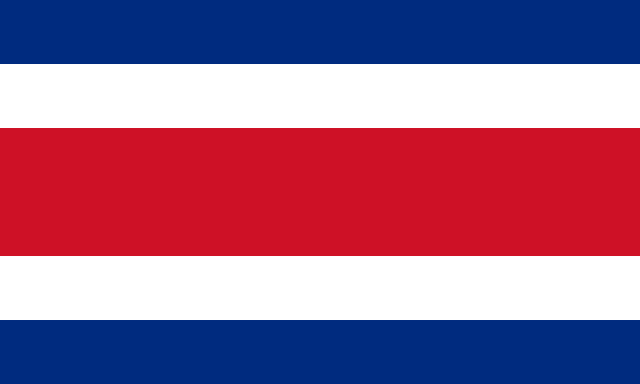
Dominica
The flag of Dominica is green and crossed with stripes of yellow, black and white. They represent sunshine, African heritage and purity. In the center there is a parrot on a red circle. This parrot, a Sisserou parrot, is the country’s national bird. He is surrounded by ten green stars. They stand for the ten districts of the island.
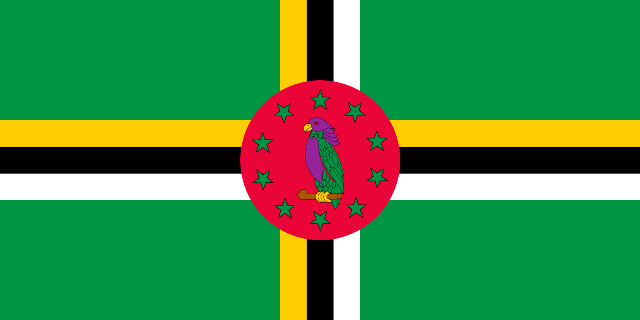
Dominican Republic
Two blue and two red fields are divided by a white cross. The cross stands for the sacrifices of the Dominican people in the struggle for freedom. Blue stands for freedom and red for the blood that was shed in the struggle for freedom.
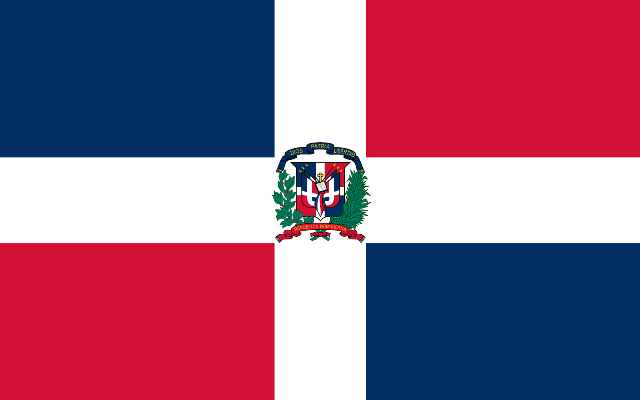
El Salvador
The flag consists of three horizontal stripes in the colors blue, white and blue. They stand for heaven, peace and the ocean. Sometimes the flag also shows the country’s coat of arms in the middle. Five volcanoes can be seen in the triangle in the middle. They stand for the five countries of the Central American Federation, which existed from 1823 to 1840 and of which El Salvador was a member.

Grenada
Grenada’s flag shows two opposite yellow and green triangles that meet in the middle. They mean sun and nature. The red border of Grenada’s flag represents the courage of the people that led to independence. The seven stars stand for the seven parishes in the country, with the middle star symbolizing the main town of St. George’s. And what is that there in the left green triangle? A nutmeg – the most important product in the country!

Guatemala
The three stripes of the flag of Guatemala are colored light blue, white and again light blue. The blue stripes represent the Pacific and Atlantic, between which the country lies. White stands for purity. The coat of arms of Guatemala is in the white stripe. A quetzal sits between two olive branches as the country’s national bird. Bird and twigs represent peace. But two guns indicate that Guatemala will defend itself if it has to.

Haiti
The flag of Haiti is blue at the top and red at the bottom. It originated from the French flag by simply removing the white stripe and arranging the stripes horizontally instead of vertically.

Honduras
The blue-white-blue color was the color of the Central American Federation. It is used by all former members. The blue stripes also symbolize the Pacific and the Atlantic – the two seas that surround Central America. The five stars stand for the five countries of this former union. Honduras is in the middle, as it is the central state of these five countries.

Jamaica
Jamaica’s flag consists of a yellow saltire and four triangles in black and green. The yellow stands for the sun, the green for nature and the black for the difficult past.

Cuba
The three blue stripes of the Cuban flag stand for the former three provinces of the island: western, central and eastern Cuba. The white in between stands for purity. The white star on a red background should stand for the state – as part of the USA. Because the inventor of the flag saw Cuba as a federal state of the USA – at a time when Cuba was still Spanish.

Nicaragua
The blue-white-blue color was the color of the Central American Federation. It is used by all former members. The blue stripes also symbolize the Pacific and the Atlantic – the two seas that surround Central America. The white stripe represents the connection between North and South America. The coat of arms of Nicaragua can be seen in the middle. It shows volcanoes and a rainbow.
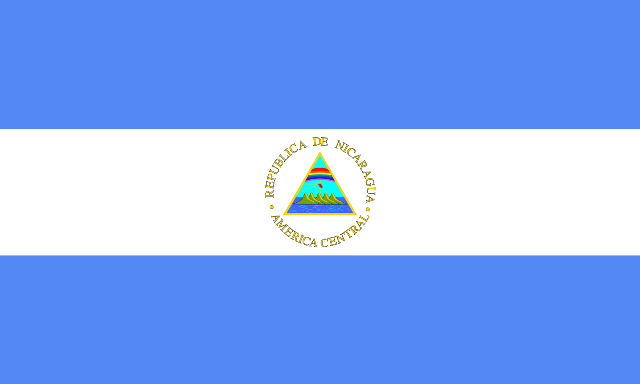
Panama
In the flag of Panama, the colors blue and red as well as the two stars stand for the two most important parties in the country, the Conservatives and the Liberals. The color white stands for peace. The aim was to unite the Panamanian people, whose country had been destroyed in the war of 1000 days from 1899 to 1902.

St. Kitts and Nevis
Green, yellow, black and red are the colors of the national flag. They stand for nature, the sun, the African heritage and the struggle for freedom. The two stars stand for the two islands, but are also symbols for hope and freedom.

St. Lucia
The background of the flag is light blue. The color represents the sky and the sea. Three triangles in white, black and yellow stand in the middle. Yellow is the sun of the Caribbean. White and black represent the European and African influence of cultures on St. Lucia.
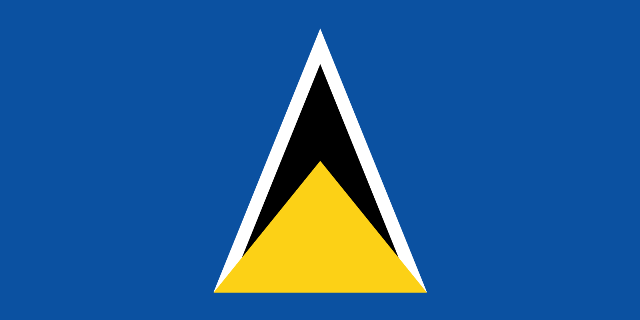
St. Vincent and the Grenadines
The flag has a blue stripe on the left and a green one on the right. The stripe in the middle is yellow and twice as wide as the other two. The colors represent the sea, the sun and nature. In the middle there are three green diamonds in the shape of a V for St. Vincent. They are a symbol of the island’s nickname: Antilles gemstones.
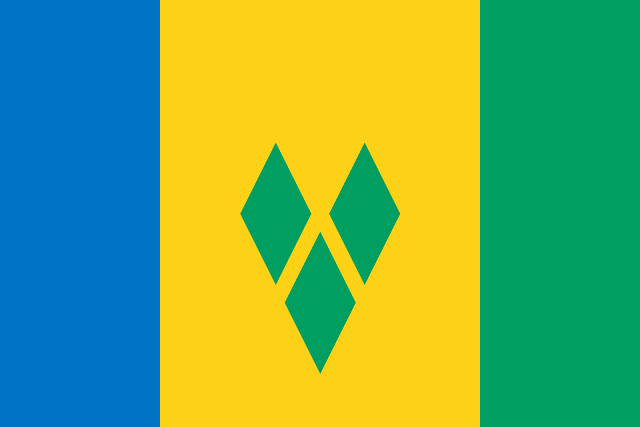
Trinidad and Tobago
The flag is red and has an oblique black stripe framed in white through it. Red stands for fire and sun and symbolizes courage. Black stands for the earth and devotion and white for water and equality.